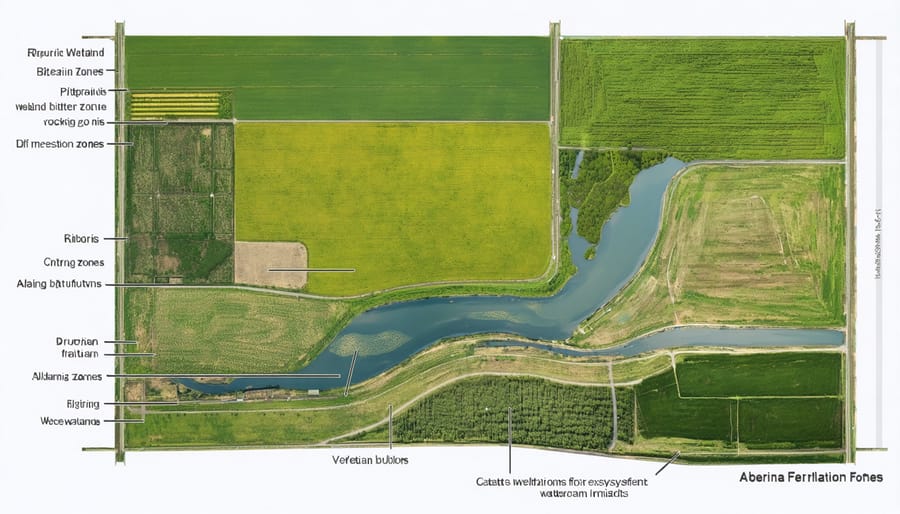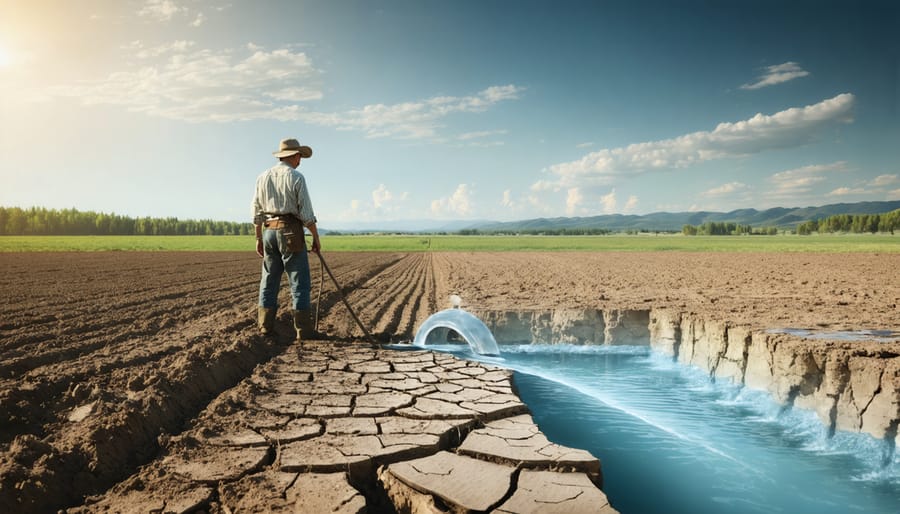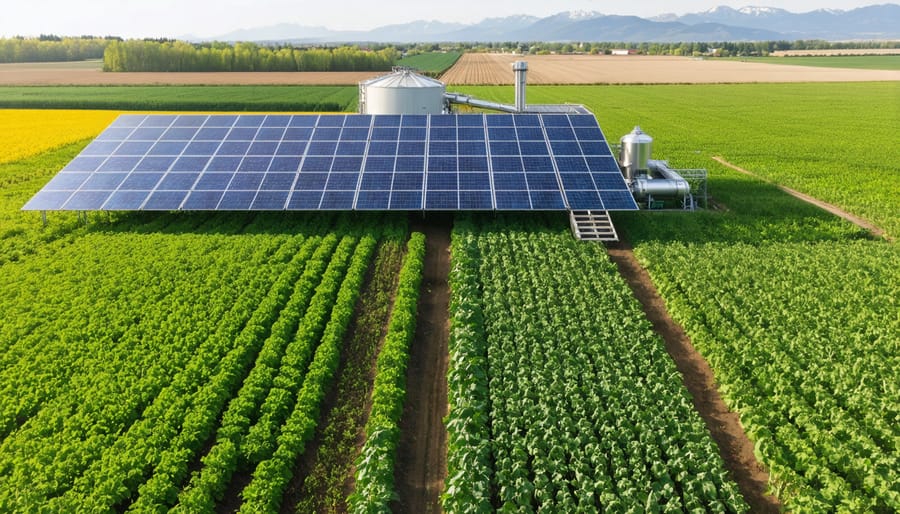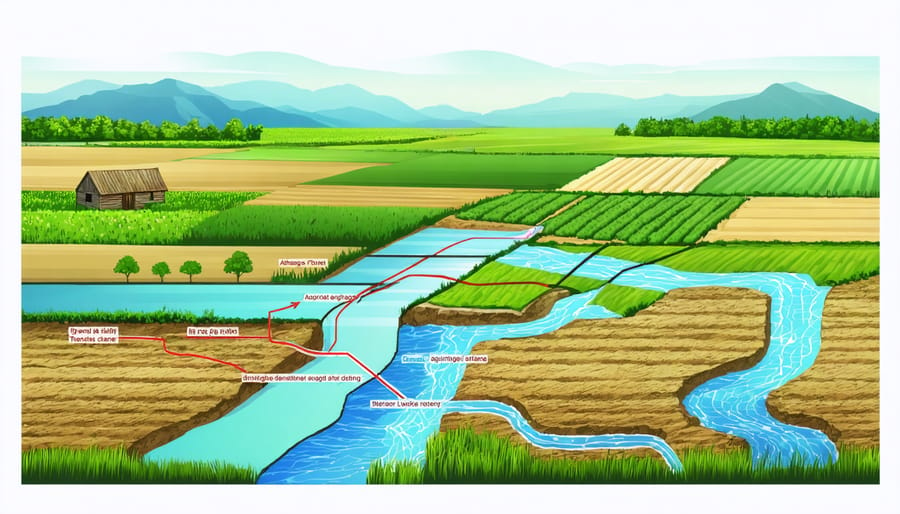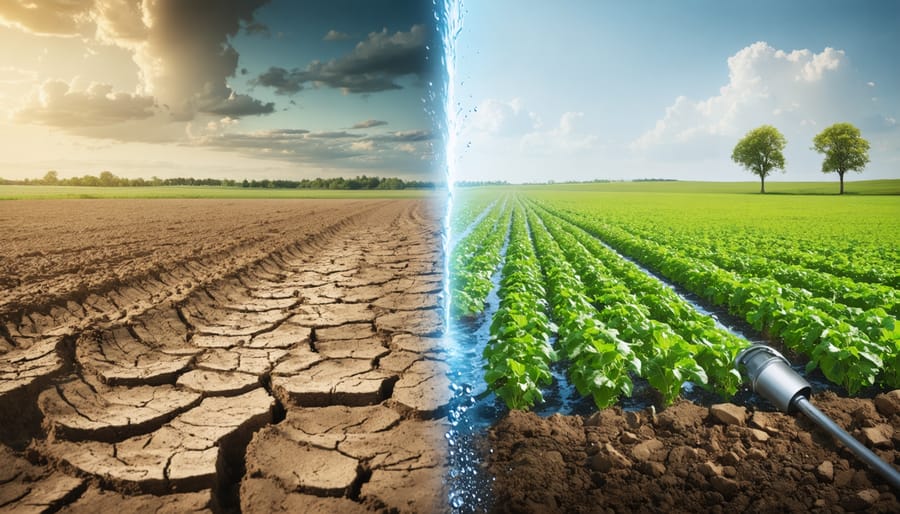Wetlands deliver over $14.9 billion worth of essential ecosystem services annually across Alberta’s agricultural landscapes, functioning as natural powerhouses that transform marginal farm areas into productive assets. These complex systems filter agricultural runoff, reduce flood risks during spring melt, and create drought buffers that protect crops during dry seasons – all while supporting local biodiversity and creating additional income opportunities through sustainable grazing and carbon credits.
For farmers and landowners, wetlands work as natural infrastructure, providing critical services that would cost millions to replicate through engineered solutions. From water purification and groundwater recharge to erosion control and pollinator habitat, these ecosystem services directly impact farm productivity and resilience. Recent studies from the University of Alberta demonstrate that properties with healthy wetlands show 23% better drought resistance and maintain higher soil organic matter levels compared to similar farms without wetland features.
By understanding and maximizing wetland ecological services, agricultural operations can reduce input costs, enhance production stability, and create new revenue streams while contributing to environmental sustainability. This practical approach to wetland management aligns with both agricultural efficiency and ecological stewardship, offering a proven path to more resilient farming systems across the Canadian prairies.
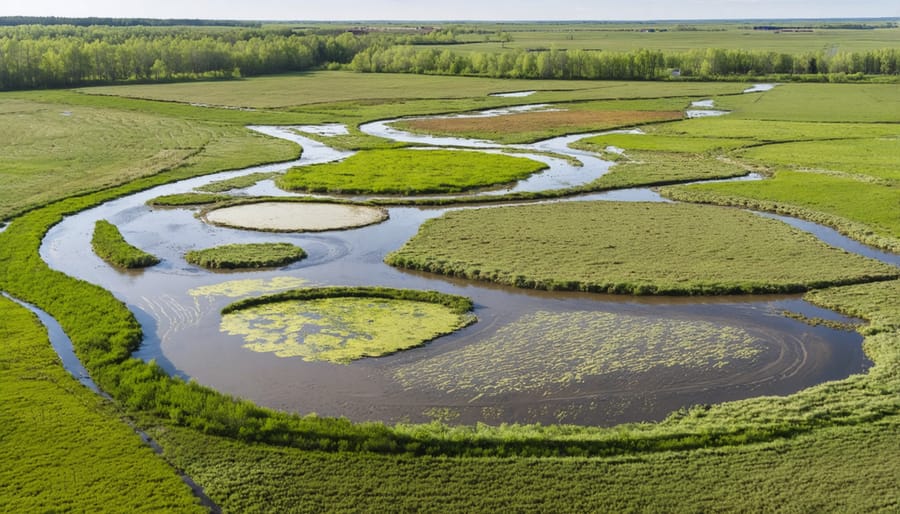
Natural Water Management: Your Farm’s Hidden Asset
Water Filtration Benefits for Alberta Farms
Alberta farmers rely heavily on wetlands for natural water filtration, which significantly improves water quality for agricultural operations. These natural systems act as highly efficient filters, removing up to 90% of sediments and agricultural runoff before water reaches irrigation systems or livestock watering points.
Local studies show that farms with preserved wetlands spend approximately 30% less on water treatment compared to those without these natural features. For example, the Marshall family farm near Red Deer saved over $5,000 annually in filtration costs by maintaining their 2-hectare wetland system.
Wetlands are particularly effective at removing excess nutrients from fertilizers, reducing phosphorus levels by up to 70% and nitrogen by 60% in surrounding water bodies. This natural purification process helps prevent algal blooms in dugouts and ensures cleaner water for livestock consumption.
During spring runoff, wetlands trap snow melt and filter out suspended solids, providing clearer water for early season irrigation. They also help break down pesticide residues and capture heavy metals, protecting both soil and groundwater quality for sustainable farming operations.
Flood and Drought Protection
Wetlands serve as nature’s insurance policy against extreme weather events, acting like giant sponges across our landscape. During heavy rainfall or spring melts, these natural basins capture and slowly release excess water, significantly reducing flood risks for nearby farmland and communities. For Alberta farmers, this natural flood control can mean the difference between a productive growing season and devastating crop losses.
In times of drought, wetlands continue to prove their worth by releasing stored water gradually into the surrounding soil, helping maintain moisture levels even during dry spells. This natural water regulation system works alongside other drought management strategies to protect crop yields and livestock operations.
Recent studies in southern Alberta show that farms with preserved wetlands experienced 35% less flood damage during extreme weather events compared to those without wetlands. Additionally, these areas maintained soil moisture levels up to 40% higher during drought conditions, providing crucial resilience for agricultural operations. By protecting and maintaining wetlands on farmland, producers create natural buffers that help weather both flood and drought conditions, ultimately supporting more sustainable and profitable farming practices.
Soil Health and Nutrient Cycling
Natural Fertilizer Production
Wetlands serve as nature’s fertilizer factories, producing and recycling nutrients essential for agricultural productivity. Here in Alberta, these ecosystems create rich organic matter through the decomposition of plant materials and aquatic organisms, providing a sustainable source of nutrients that can benefit nearby farmland.
The process begins when plants and other organisms in wetlands die and decompose underwater. This organic material breaks down into valuable compounds like nitrogen, phosphorus, and potassium – the same nutrients farmers typically add through commercial fertilizers. The slow decomposition in wetland conditions creates stable forms of these nutrients that release gradually into surrounding soils.
Local farmer Mike Henderson from Lacombe County shares, “The field adjacent to our restored wetland consistently shows higher soil fertility. We’ve reduced our fertilizer use there by about 30% while maintaining yields.”
Wetlands also trap and filter nutrients from surface runoff, preventing them from being lost downstream. This natural cycling process creates a nutrient bank that surrounding agricultural lands can draw from. During dry periods, these stored nutrients become available to nearby crops through groundwater movement and soil interaction.
For best results, maintain natural wetland vegetation buffers and avoid disturbing wetland sediments. This preserves the nutrient cycling capacity while protecting water quality. Consider incorporating wetland areas into your farm’s nutrient management plan to maximize these natural benefits.

Erosion Control Success Stories
For the Thompson family in Lacombe County, maintaining their wetlands has become a cornerstone of their farm’s success. “We used to lose tons of topsoil during spring runoff,” says Sarah Thompson. “Since preserving our natural wetlands and implementing buffer zones, we’ve seen dramatic improvements in our ability to prevent soil erosion.”
In Camrose, the Andersons’ 640-hectare farm showcases how strategic wetland management can protect valuable cropland. Their restored wetland system has reduced soil loss by an estimated 80% during heavy rainfall events, while creating natural water retention areas that benefit their entire operation.
Perhaps most impressive is the story of the Miller Creek Watershed Project, where twelve neighboring farms collaborated to preserve interconnected wetlands. This community-led initiative has successfully protected over 200 hectares of farmland from erosion damage, saving an estimated $45,000 annually in soil replacement and field reconstruction costs.
“The wetlands act like natural shock absorbers,” explains Dave Miller, project coordinator. “During spring melt and summer storms, they slow water movement across our fields and trap sediment that would otherwise wash away. It’s been a game-changer for everyone involved.”
These success stories demonstrate how preserving wetlands isn’t just about conservation – it’s a practical solution for protecting agricultural investments and ensuring long-term farm sustainability.
Biodiversity Benefits for Your Farm
Natural Pest Control
Wetlands serve as natural pest control powerhouses, offering Alberta farmers a sustainable alternative to chemical pesticides. These ecosystems naturally support diverse populations of beneficial insects, birds, and amphibians that feed on common agricultural pests. A single barn swallow, commonly found near wetland areas, can consume up to 850 insects per day, including troublesome pests like cutworms and grasshoppers.
Research from the University of Alberta shows that farms maintaining healthy wetlands experience up to 30% fewer pest-related crop losses compared to those without wetland buffers. These natural areas provide habitat for predatory insects like lady beetles and parasitic wasps, which help control aphid populations and other crop-damaging insects.
Additionally, wetlands support healthy populations of bats, with a single brown bat capable of consuming up to 600 mosquitoes per hour. This natural pest management not only protects crops but also reduces the need for chemical interventions, leading to cost savings and improved soil health.
Local farmers near Camrose have reported significant reductions in pesticide use after implementing wetland conservation practices, with some cutting their pest control expenses by 40% over five years. This demonstrates how maintaining wetland ecosystems can contribute to both environmental sustainability and farm profitability.
Pollinator Support
Wetlands play a crucial role in supporting Alberta’s pollinator populations, which are essential for successful crop production across the province. These diverse ecosystems provide habitat and food sources for native bees, butterflies, and other beneficial insects throughout the growing season.
The varied plant species found in wetland areas, including cattails, sedges, and flowering plants, offer extended blooming periods that help sustain pollinators when crop flowers aren’t available. This continuous food source is particularly valuable during early spring and late fall when agricultural fields may be dormant.
Local farmer Mike Thompson from Lacombe County notes, “Since preserving the wetland on my property, I’ve noticed more diverse pollinator activity in my canola fields, which has positively impacted my yields.”
These natural areas also provide essential nesting sites and overwintering habitat for native bee species. The undisturbed soil around wetlands offers perfect conditions for ground-nesting bees, while hollow plant stems provide homes for cavity-nesting species.
Maintaining healthy wetlands on farmland creates a network of pollinator-friendly spaces across the landscape. This connectivity helps ensure stable pollinator populations, which can increase crop yields by up to 30% in certain varieties, according to recent Alberta Agriculture studies.
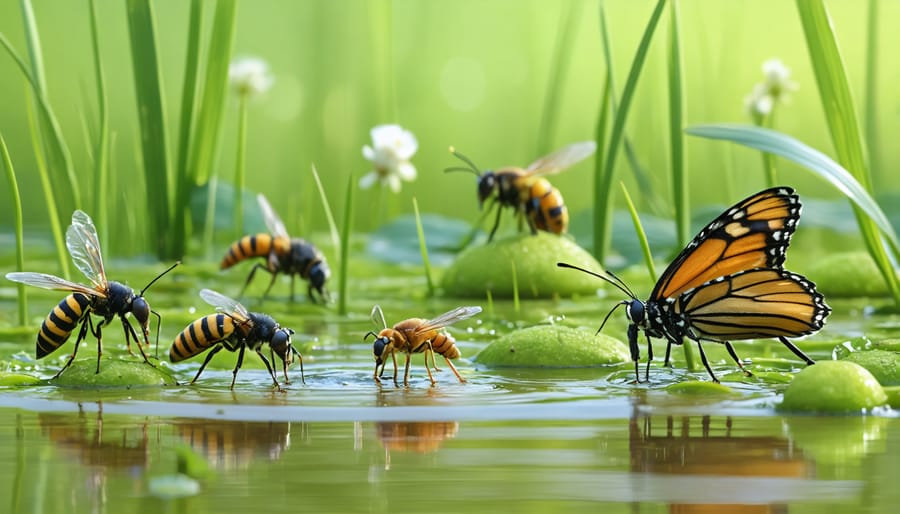
Practical Integration Strategies
Assessment and Planning
Before integrating wetlands into your agricultural operation, start with a thorough assessment of your property. Walk your land during different seasons, noting natural depressions, existing water flow patterns, and areas prone to flooding. Map these features and consider how they connect to your current farming practices.
Work with local conservation authorities or wetland specialists to evaluate your land’s potential. They can help identify ideal locations for wetland preservation or restoration based on soil types, topography, and existing wildlife corridors. Many Alberta counties offer free consultations and mapping services to support this process.
Consider your operational goals when planning wetland integration. Are you primarily interested in water management, wildlife habitat, or both? This will influence the size, depth, and vegetation patterns of your wetland areas. For most farms, a mixture of permanent and seasonal wetlands provides the most diverse benefits.
Create a multi-year implementation plan that aligns with your farm’s schedule and budget. Many farmers find success by starting small and expanding gradually. Remember to account for seasonal timing – fall and winter planning allows for spring implementation when conditions are optimal.
Document your baseline conditions through photographs and basic water quality measurements. This will help you track improvements and adjust your management strategies over time. Consider joining local watershed stewardship groups to share experiences and learn from other farmers’ wetland projects.
Maintenance and Monitoring
Regular monitoring and proper maintenance are essential for ensuring your wetland continues to provide valuable ecological services. Start by establishing baseline measurements of water levels, plant diversity, and wildlife presence. Keep detailed records using simple monitoring forms, which many Alberta agricultural extension offices can provide.
Conduct seasonal inspections of water control structures, checking for erosion, debris buildup, or damage. During spring runoff and after major storms, pay special attention to drainage patterns and water retention. Remove invasive species promptly to prevent them from overtaking native vegetation.
Maintain buffer zones around wetlands by leaving natural vegetation undisturbed. These areas should be at least 10 metres wide to effectively filter runoff and provide wildlife habitat. Consider rotational grazing practices that protect wetland edges while still allowing livestock controlled access to water.
Track wildlife use through simple methods like photo documentation or seasonal bird counts. Many Alberta farmers participate in citizen science programs, sharing their observations with local conservation groups. This data helps measure the success of wetland management efforts across the region.
If you notice significant changes in water levels or plant health, consult with local wetland specialists. The Alberta ALUS program offers support for wetland maintenance and can connect you with experts who understand both agricultural needs and wetland conservation.
Remember, healthy wetlands are resilient systems that often require minimal intervention once properly established. Focus on prevention rather than correction, and work with natural processes rather than against them.
As stewards of the land, Alberta farmers play a crucial role in preserving wetlands and their invaluable ecological services. These natural systems work tirelessly to support agricultural operations through water filtration, flood control, and drought mitigation. By maintaining healthy wetlands on farmland, producers ensure natural pollinator habitat, reduce erosion, and create resilient landscapes that can better withstand climate challenges.
The economic benefits of wetland preservation are clear, from reduced irrigation needs to improved soil health and increased biodiversity. Many Alberta farmers have already discovered that integrating wetland management into their operations leads to more sustainable and profitable farming practices.
Looking ahead, the preservation of wetlands is not just an environmental responsibility—it’s an investment in the future of Canadian agriculture. By working together to protect these vital ecosystems, we strengthen our farming communities and ensure that future generations can continue to benefit from nature’s services. Remember, every hectare of wetland preserved today contributes to the long-term success of our agricultural sector and the health of our shared environment.
Take the first step by assessing the wetlands on your property and exploring available conservation programs. Your local agricultural extension office can provide guidance on best practices and potential funding opportunities for wetland preservation initiatives.


